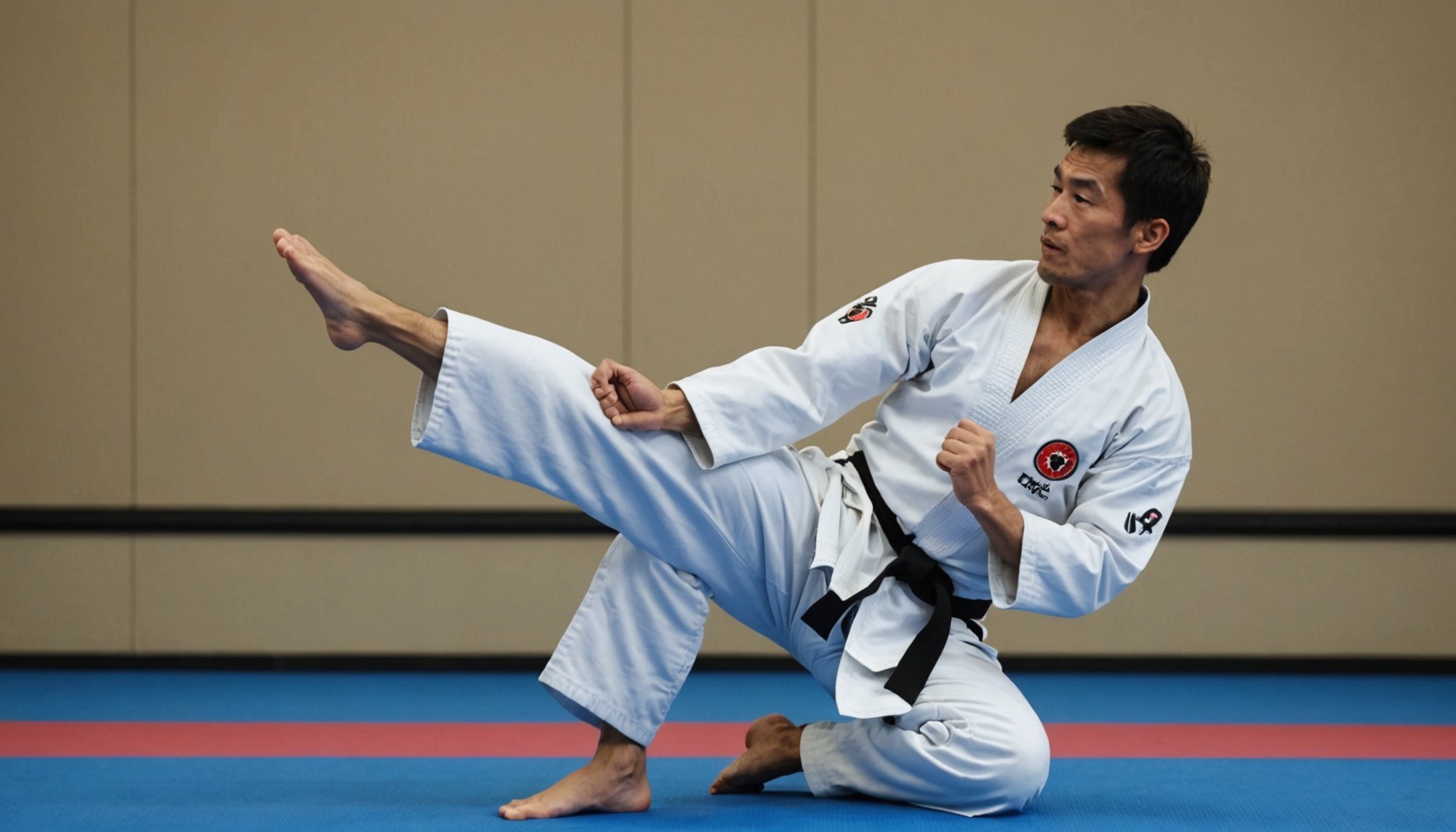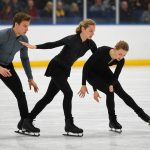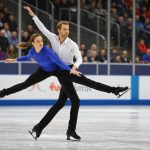Importance of Dynamic Stretching in Karate
Dynamic stretching plays a crucial role in enhancing karate flexibility and overall martial arts performance. Unlike static stretching, dynamic stretching involves active movements that prepare the muscles for intense physical activity. This form of stretching is essential in karate as it boosts flexibility, allowing practitioners to manoeuvre smoothly and execute moves effectively. Improved flexibility translates to better performance, as it enhances the range of motion required for various karate techniques.
One key advantage of dynamic stretching in karate is its role in injury prevention. By warming up the muscles and joints, dynamic stretching reduces the risk of strains and sprains during training. Proper stretching techniques also ensure that the body is prepared to handle the physical demands of karate, thereby promoting safety.
Also read : Maximizing athletic excellence: enhancing joint mobility for combat sports competitors in the uk
It’s important to integrate dynamic stretching into daily practice to optimize its benefits. Training that begins with dynamic stretching supports muscle conditioning and prepares the body for more intense exercises. Moreover, understanding how to perform these stretches correctly is vital. Mistakes in technique could lead to injuries rather than preventing them. Hence, karate practitioners must follow guidelines and listen to their bodies to maximize the effectiveness and safety of dynamic stretching.
Essential Dynamic Stretching Techniques
Dynamic stretching techniques are indispensable for a comprehensive martial arts warm-up, enhancing your overall performance and readiness for karate exercises. Implementing effective dynamic stretches can elevate your flexibility while ensuring the right muscle and joint preparation.
Also to read : Enhancing athletic recovery: the impact of massage therapy on combat sports athletes in the uk
Leg Swings
Leg swings are pivotal for improving hip flexibility, a core element for executing kicks and stances efficiently. To perform leg swings correctly, stand next to a wall for support. Keep your upper body stable and swing one leg forward and backwards. Aim for a smooth, controlled motion. Avoid jerking or hasty movements, which can lead to strain. Common mistakes include swinging too high too soon and neglecting to stabilise the pelvis.
Arm Circles
Increasing shoulder mobility through arm circles is crucial in karate. Begin by rotating your arms in small circles, gradually increasing the size and speed. Focus on smooth, uninterrupted circles. Integrating this into your routine ensures your shoulders are agile and responsive, which is essential for blocking and striking.
Torso Twists
Engaging the core through torso twists not only boosts balance but also enhances rotational mobility. Stand upright, positioning feet shoulder-width apart. With your arms raised, twist your upper torso side to side gently. Be cautious, particularly if you are a beginner – avoid over-twisting, which can lead to discomfort or injury.
Integrating Dynamic Stretching into Training
Incorporating dynamic stretching into your training routine is essential for optimising karate practice. To achieve significant flexibility enhancement, dynamic stretches should be part of every warm-up session. Initiate with light movements to prepare the body, gradually increasing intensity as the muscles become more responsive. Typically, a routine lasting 10-15 minutes is beneficial, especially when focused on techniques related to specific karate exercises. Importantly, the recommended frequency is daily practice, which aligns body readiness and improved performance.
Customising your routine based on individual needs is crucial. Factors like age, fitness level, and current flexibility condition should dictate the choice of stretches. For instance, more advanced practitioners may incorporate complex movements, while beginners focus on foundational stretches.
Timing is also vital. Prioritise dynamic stretching before intense training sessions to ensure muscles are adequately prepared and capable of handling stress. Beyond the preparation phase, ensure a cool-down period post-training to support muscle recovery and further enhance flexibility.
Listening to your body’s signals will help prevent strain or injury. Recognise fatigue or discomfort and adjust routines accordingly, maintaining consistency without overexertion. Emphasising these guidelines fosters a safe and effective dynamic stretching regime, enhancing overall martial arts performance.
Benefits of Dynamic Stretching for Karate Practitioners
Dynamic stretching offers significant advantages for karate practitioners, impacting both short and long-term martial arts conditioning. In terms of immediate benefits, stretching enhances performance and movement efficiency, directly contributing to more fluid and effective karate techniques. By warming up the muscles and increasing flexibility, practitioners achieve smoother transitions in their movements.
Long-term, dynamic stretching fosters muscle health and flexibility, mitigating the risk of injury and promoting sustainable practice habits. Regular incorporation of these stretches enhances the body’s resilience, supporting the rigours of karate training.
Another critical aspect is injury prevention, particularly during intense training sessions. Properly stretched muscles are less susceptible to strains, sprains, and other common martial arts injuries. Investing time in a dynamic warm-up protects the muscles and prepares the joints for the physical demands of karate.
For optimal results, practitioners should focus on proper technique and regular practice. Consistently engaging in dynamic stretching not only boosts immediate performance but also ensures ongoing muscle health. By understanding and applying these benefits, karate practitioners can enjoy increased agility, reduced injury risk, and enhanced overall conditioning, making each session both safer and more productive.
Addressing Common Pitfalls and Misconceptions
Understanding dynamic stretching and its benefits is vital for optimal karate performance, but misconceptions can hinder progress. One common myth is that static stretching surpasses dynamic stretching in preparing the body for martial arts. In reality, each serves distinct purposes. Static stretching improves muscle elasticity post-workout, while dynamic stretching is key for preparing muscles and increasing blood flow before physical activity.
Practitioners often make mistakes during stretching, such as rushing through movements or using incorrect form. This can lead to strain rather than improvement. For instance, When executing arm circles or leg swings, practitioners should focus on controlled movements rather than speed.
Another frequent pitfall is ignoring personal limits. Flexibility enhancement doesn’t happen overnight, and pushing the body too hard can cause injury. Listen to your body’s feedback; pain is a signal to adjust your routine.
Recognizing overexertion is crucial. Signs include persistent soreness beyond typical post-stretch discomfort, or reduced performance in training sessions. By dispelling myths, acknowledging mistakes, and respecting personal limits, karate practitioners can optimize their dynamic stretching routine, ensuring a safer and more effective practice.











